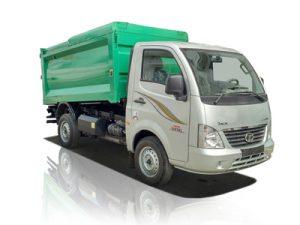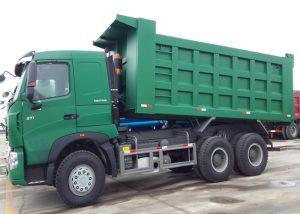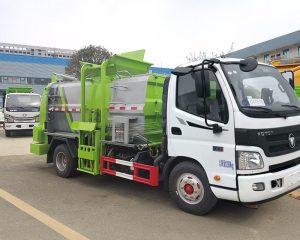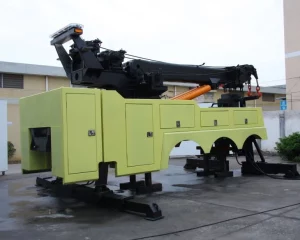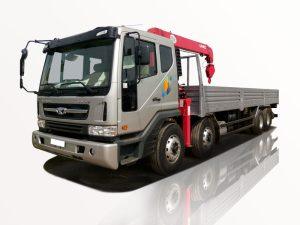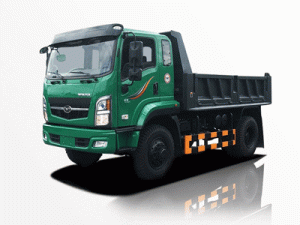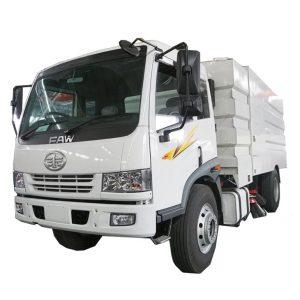Monday to Saturday - 8:00 -17:30
Understanding Grapple Loader Trucks: A Comprehensive Guide
Grapple loader trucks play a critical role in various industries, including waste management, forestry, and construction. These versatile vehicles are equipped to handle heavy loads with ease, making them indispensable for operators who need to move large materials quickly and efficiently. In this article, we will delve into all aspects of grapple loader trucks, from their features and functionalities to applications and tips for optimal usage.
What is a Grapple Loader Truck?
A grapple loader truck is a specialized type of vehicle designed for loading and transporting bulky materials. Using a hydraulic system, these trucks are fitted with a grapple attachment, which allows the operator to pick up, move, and load logs, waste materials, debris, and other items without the need for manual lifting. This technology greatly enhances productivity on job sites, reducing labor costs and improving safety.
Key Features of Grapple Loader Trucks
1. Hydraulic Grapple System
The hallmark of a grapple loader truck is its hydraulic grapple system. This allows for precise control over the loading process. The grapple can open and close to grasp materials firmly, ensuring that even loose or irregular loads can be handled effectively.
2. Robust Chassis and Frame
Grapple loader trucks are built on a sturdy chassis designed to handle heavy loads. The strength of the frame is essential for stability and safety, especially when loading materials at height or uneven ground.
3. Versatile Loading Capacities
The loading capacity of grapple loader trucks varies by model. Smaller units may handle loads of up to 5 tons, while larger models can lift over 20 tons. It’s crucial for operators to select a truck that meets their specific needs based on the type of materials they handle.
4. All-terrain Capabilities
Many grapple loader trucks are designed to operate in diverse environments, including rugged terrains. Features such as all-wheel drive and high ground clearance enhance maneuverability on challenging job sites.
5. Safety Features
Safety is paramount in operating grapple loader trucks. Features like emergency stops, backup alarms, and operator awareness systems help mitigate risks associated with heavy lifting and movement.
Types of Grapple Loader Trucks
1. Knuckle Boom Trucks
Knuckle boom grapple loader trucks feature a crane-like articulated arm that allows for extended reach and flexibility. They are ideal for jobs that require precise positioning of materials, such as construction projects and tree removal.
2. Straight Boom Trucks
Straight boom grapple loader trucks have a rigid boom that provides direct lifting capabilities. These trucks are often used in lumber yards and heavy construction sites for straightforward loading and unloading tasks.
3. Location-specific Models
Various manufacturers build grapple loader trucks tailored to specific industries, such as waste management or forestry. These specialized models come with attachments and modifications suited to the unique requirements of their intended use.
Applications of Grapple Loader Trucks
1. Forestry and Logging
In the forestry industry, grapple loader trucks are used to transport logs from harvesting sites to processing plants. Their ability to lift heavy, awkward loads makes them invaluable for loggers.
2. Waste Management
Grapple loader trucks play a crucial role in waste management by efficiently loading debris and refuse from construction sites or during clean-up operations. Their hydraulic systems allow for quick and easy loading of bulky materials, improving landfill operations.
3. Construction Sites
In construction, these trucks are instrumental in moving construction materials, such as stone, steel, and concrete. Their robust design and powerful grapples make them suitable for handling heavy loads.
4. Landscaping and Land Clearing
Grapple loader trucks are also used in landscaping for land clearing and site preparation. They can quickly dispose of unwanted vegetation, rocks, and other debris, making site clean-up more efficient.
Choosing the Right Grapple Loader Truck
1. Assess Load Requirements
Before purchasing or renting a grapple loader truck, assess the types and weights of the loads you will typically handle. This will ensure you choose a model with the appropriate capacity.
2. Consider Your Job Site Conditions
Evaluate the terrains where you plan to operate the vehicle. If you work in rugged or outdoor environments, select a truck with high ground clearance and all-terrain capabilities.
3. Evaluate Maintenance Needs
Regular maintenance is crucial for grapple loader trucks. Consider models that offer easy access to hydraulic systems, electrical components, and other critical parts for routine service checks.
Best Practices for Operating Grapple Loader Trucks
1. Training and Certification
Only trained and certified operators should handle grapple loader trucks. This training ensures that they understand the vehicle’s capabilities and safety procedures, minimizing accidents.
2. Conduct Pre-operation Inspections
Before starting work, operators should perform a thorough inspection of the truck. Check hydraulic fluids, brakes, tires, and the functioning of the grapple to ensure everything is in proper working order.
3. Use Proper Loading Techniques
Operators should be trained in correct loading techniques to maximize safety and efficiency. This includes understanding weight distribution, how to approach loads, and how to maneuver while lifting.
Cost Factors of Grapple Loader Trucks
1. Purchase vs. Rental
Deciding between purchasing or renting a grapple loader truck depends on your budget, frequency of use, and project duration. Renting may be more cost-effective for short-term projects, while purchasing might be a better long-term investment for ongoing work.
2. Maintenance Costs
Ownership comes with maintenance costs that can accumulate over time. It’s essential to allocate a budget for regular servicing to ensure the longevity of the vehicle.
3. Operational Expenses
Fuel efficiency is a vital consideration. Grapple loader trucks vary in fuel consumption, depending on their size, engine type, and load. Compare models to find an economically viable option.
Future Trends in Grapple Loader Trucks
1. Advanced Technology Integration
With the rise of smart technology, future grapple loader trucks may feature advanced automation, integrating GPS, telematics, and AI for better operational efficiency and safety standards.
2. Electric and Hybrid Models
As environmental awareness grows, we may see an increase in electric and hybrid grapple loader trucks. These models would reduce emissions and fuel consumption, aligning with sustainable practices in the industry.
3. Enhanced Safety Features
Expect ongoing developments in safety technology, with features such as proximity detection systems and automated stabilization to help prevent accidents and enhance operator safety.
FAQs about Grapple Loader Trucks
1. What is the average cost of a grapple loader truck?
The cost of grapple loader trucks can vary widely, ranging from $50,000 for smaller models to over $300,000 for larger, more specialized trucks. Factors influencing cost include size, features, and brand.
2. How much weight can a typical grapple loader truck lift?
Most grapple loader trucks can lift between 5 to 20 tons, depending on the model. It’s essential to check the specifications of each truck to ensure it meets your lifting needs.
3. Are grapple loader trucks suitable for urban environments?
Yes, grapple loader trucks are suitable for urban environments, especially for waste management and construction projects. Their adaptability allows for effective maneuvering in somewhat restricted spaces.
4. What types of maintenance do grapple loader trucks require?
Regular maintenance includes hydraulic system checks, tire inspections, and cleaning the grapple. Operators should also schedule routine servicing for engine checks and system diagnostics.
5. Can grapple loader trucks be customized for specific jobs?
Absolutely, many manufacturers offer customizable options, including various grapples, booms, and attachments to suit specific industries such as lumber, waste, and landscaping.
6. What safety precautions should be taken when operating a grapple loader truck?
Operators should engage in thorough training, conduct pre-operation inspections, and follow best loading practices. Additionally, wearing protective gear and adhering to safety regulations is essential for reducing accidents.


